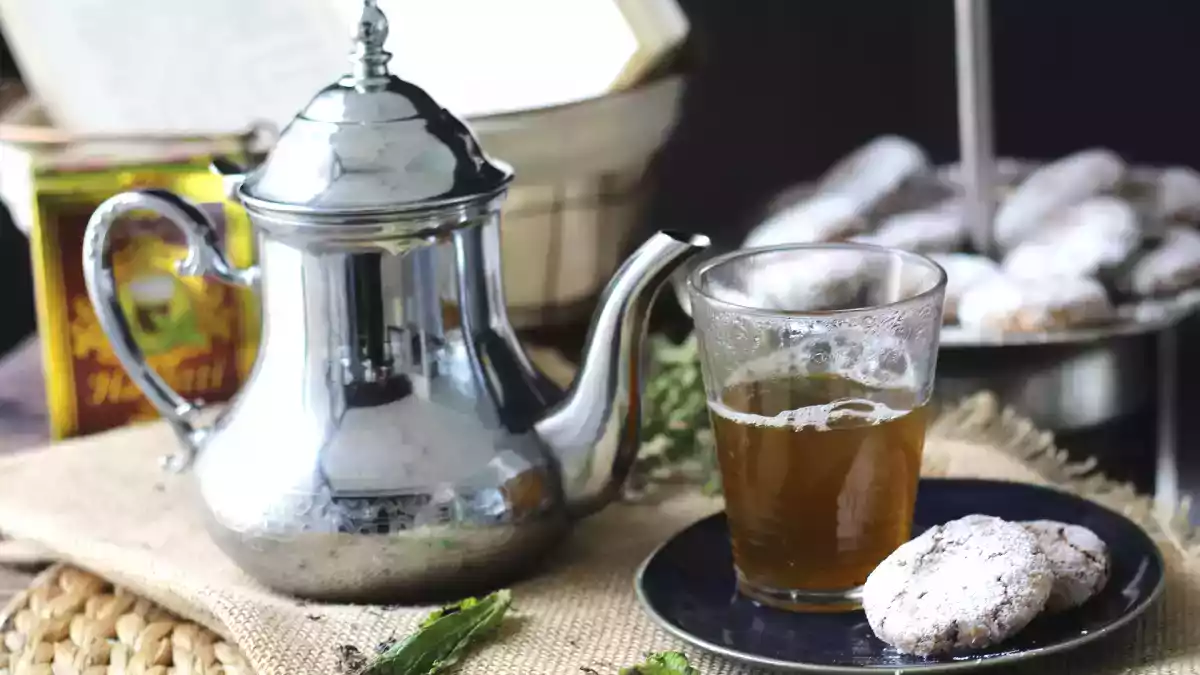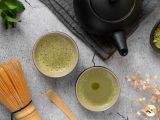13 curiosities about Moroccan tea that you might not know

You may have tasted it in a neighborhood tea shop or you may have been served it, with all the ritual, on a trip to Morocco. You may even prepare it at home, with fresh mint and sugar, as the canons dictate. But if you think that Moroccan tea, or Moorish tea, as it is popularly known in Spain, and atay in Morocco, is just a hot drink with mint, you are missing half the charm. This infusion, sweet and fragrant, is also a symbol of hospitality, daily ceremony and shared art. Its intense flavor and bright foam on the surface are no coincidence: they respond to centuries of history, cultural influences and small gestures loaded with meaning. In this article, we tell you thirteen curiosities you may not have known about this fascinating drink.
Not grown in Morocco
Although it is immediately associated with Moroccan culture, Moorish tea does not originate in Morocco. The country does not grow tea, as its climate does not allow it, and the variety traditionally used (Gunpowder green tea) is imported from China. What is distinctive is the way it is prepared.
It is not an ancestral tradition
Contrary to what many believe, tea has not been part of Moroccan culture since ancient times. It became popular in the 19th century, partly thanks to trade with Great Britain. Until then, fresh mint and peppermint infusions were mainly consumed in Morocco.
It is drunk very hot, even in summer
In Morocco, tea is served almost boiling even on the hottest days. This makes sense in dry climates: the heat of the tea stimulates sweating, and the sweat, as it evaporates, cools the body. In addition, the hot water helps to kill bacteria, making it a safe and healthy beverage.
No spoon stirring
It is common to throw away the first water
The first contact of the tea with boiling water is not drunk. It is used to "wash" the leaves, eliminate impurities, soften the flavor and reduce some of the theine and tannins that can make the beverage bitter. This first infusion is discarded before continuing with the preparation.
Each glass tastes different
A curiosity that often surprises the visitor: when served in several turns from the same teapot, the flavor of the tea changes in each glass. As the leaves remain infused inside the container, the intensity evolves. The last cup is usually the most intense.
Mint should not float
In Morocco, mint (or spearmint) sinks to the bottom of the teapot. If it floats, it can "burn" in the heat, giving rise to a bitter taste that Moroccans carefully avoid.
Tea is served with foam
Pouring (pouring tea from a certain height) is not only an elegant gesture. It serves to oxygenate the infusion, mix the ingredients and generate a fine foam that is a sign of good preparation. In Morocco, a tea without foam is not well done.
Served in crystal glasses, not in cups
Moroccan tea is never served in a cup. It is drunk in small, glass cups without a handle, designed to highlight both the ritual and the aesthetics. They are usually cylindrical and transparent, which allows to check that the color of the tea is the right one. It also allows to appreciate the foam, a sign that it has been well served. The glass, often decorated with golden or traditional motifs, further embellishes the gesture of offering it. Its small size makes it possible to serve several rounds, prolonging the conversation and the pleasure of sharing.
Slurping is not impolite
In Morocco, sipping tea, even making some noise, is not considered impolite; on the contrary, it is a practical and accepted way to cool it when drinking. Moroccan tea is served very hot, and sipping gently allows you to enjoy it without burning and to better bring out its aromas. Far from being frowned upon, this small gesture is part of the daily ritual.
It is sweetened without fear
Moroccan tea is served very (very) sweet: between 1 oz/30gr and 1.7 oz/50 gr of sugar per pot. In certain areas, the lump is even placed between the teeth and the tea is drunk through it. The sweetness is an essential part of the taste and the welcoming character of this drink.
Tea should not be refused
Refusing tea in Morocco is considered rude. It is a symbol of welcome, friendship and courtesy, and is always offered before starting any conversation, treatment or family visit.
No time for tea
Unlike the British five o'clock tea, Moroccan tea does not follow a fixed schedule. In Morocco, it is drunk at any time of the day: when waking up, when receiving visitors, after lunch or simply for a break. More than a routine, it is a constant in daily life, always ready to accompany a conversation or a moment of calm.
How about you?
Did you know all these curiosities about Moroccan tea? Did any of them surprise you in particular? Do you usually drink it at home, in tea shops or did you discover it while traveling?
Tell us your experience, your rituals or even your favorite recipe. We'll read you in the comments... and don't hesitate to share this article with anyone who knows how to enjoy a good atay!
>> How to prepare the real Moroccan tea, HERE!
You may also be interested in:
 Patricia González
Patricia González

Comments